Femia > Health Library > Getting Pregnant > Planning pregnancy > Anteverted uterus: Understanding its impact on fertility and pregnancy
Anteverted uterus: Understanding its impact on fertility and pregnancy

- Updated Feb 25, 2025
- Published
CRAFTED BY HUMAN
Crafted by human At Femia, we provide accurate and up-to-date information at every stage of your journey, from trying to conceive, pregnancy and postnatal support. All content is created by a real person based on in-depth research and own professional experience. Femia ensures that you will receive expert advice, strict accuracy and a personalized approach from our authors/medical experts. Learn more about our editorial policy.
FACT CHECKED
Fact checked At Femia Health, we maintain the highest standards of editorial excellence in delivering content focused on helping you conceive, guiding you through pregnancy, and supporting you postpartum. Explore our content review principles to learn how we ensure the accuracy and quality of our health and lifestyle tips for every stage of your journey.
More than 70% of women around the globe have an anteverted uterus. It is the most common position in which a uterus is naturally found. The anteverted uterine position will not impact your fertility, not affect your pregnancy, labor, or delivery. An anteverted uterus naturally adjusts and grows to accommodate your baby, posing no additional risks to your pregnancy journey.
The position of your uterus is generally not a concern when considering getting pregnant, as most uterine positions do not affect fertility. However, it will be reassuring to know that at least 50% of women have an anteverted uterus(1), making it the most common position the uterus is naturally found in.
This article will explore what it means to have an anteverted uterus, along with its impact on your fertility and pregnancy.
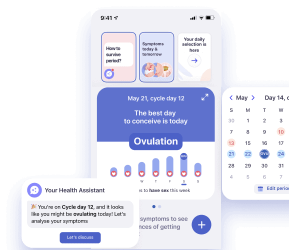
What does ‘anteverted uterus’ mean?
Your uterus is your primary reproductive organ, functioning during both your period and pregnancy. During your monthly period, your uterus sheds its lining. If you become pregnant, it will provide a safe home for your baby to grow in until they are born.
Simply stated, an anteverted uterus is a common uterine position, tilted forward towards the bladder. When your uterus is formed and grows to its normal size, it usually comes to lie in the anteverted— or forward-facing—position. In this position, it is found just above your bladder and in front of your rectum.
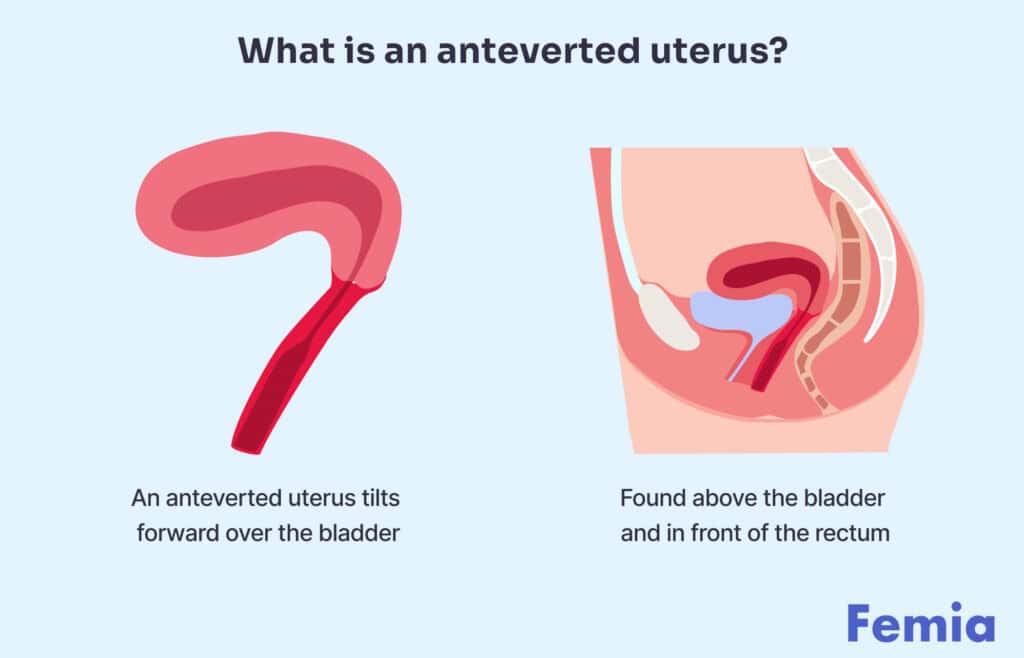
You usually do not feel your uterus when it is in this position. While the tilt of your uterus can change during pregnancy and childbirth, it’s rarely a cause for concern. In most cases, the tilt of your uterus does not impact your pregnancy, and your doctor will only assess it if there’s a specific reason to do so. Rest assured, it’s typically not something to worry about.
@femia.fertility What is your go-to recipe to boost fertility? #hormonehealth #hormoneimbalance #fertility #fertilityfoods #fertilityjourney #fertilityboostingfoods #ttcdiet ♬ Pop beat BGM / long version(1283324) - nightbird_bgm
How do I know which way my uterus is tilted?
A visit to your gynecologist can help determine which way your uterus tilts. During a routine pelvic exam, your doctor can feel for the position of your uterus and confirm if it is anteverted.
This indicates that you have the most common, and yes, normal, tilt of a uterus. An ultrasound can also be performed to confirm this; however, it is not frequently required unless you have recently noted physical discomfort related to your uterus.
Women rarely experience any symptoms with an anteverted uterus. Most uterus positions, whether anteverted or retroverted, are within the spectrum of normal and usually don’t cause any issues. It’s only when the position of the uterus starts to cause problems that it might require medical attention.
Symptoms and causes of anteverted uterus
Most people with an anteverted uterus don’t experience symptoms, as it’s a normal uterine position and typically doesn’t cause health issues. However, in rare cases where the tilt is extreme, it may cause pelvic pain or discomfort during sex.
An anteverted uterus is usually present from birth but can develop later due to changes in the body. During pregnancy, a retroverted uterus often shifts to an anteverted position, sometimes permanently. Scar tissue or adhesions from conditions like endometriosis or previous surgeries can also cause this shift.

Ways to diagnose and manage an anteverted uterus
Your doctor may perform a pelvic exam, an ultrasound, or both to check if your uterus tilts forward. An ultrasound uses high-frequency sound waves to create images of your internal organs.
During a pelvic exam, your doctor examines your vagina, ovaries, cervix, uterus, and abdomen to detect any abnormalities.
Is having an anteverted uterus considered normal?
Since an anteverted tilt of the uterus is present in more than half of the women, it is regarded as a normal position of the uterus.
Along with anteversion, your uterus will also be described based on its flexion, the angle at which the topmost portion of your uterus is tipped relative to your cervix. Anteverted uterus are also anteflexed, which means that the fundus, the top part of the uterus, is flexed or “bending” forward.
To understand an anteverted uterus, it is also important to consider other positions a uterus may be found in.
After anteversion, the retroverted uterus and mid-positioned uterus are the other two common uterine positions observed. As the names indicate, the uterus is tilted either backward or positioned in the middle of the two, respectively.
During a woman’s reproductive years, her uterus can take these alternative uterine positions, especially with underlying conditions such as endometriosis, adenomyosis, or a previous surgery.
👉 Find out more: How to get pregnant fast with retroverted uterus: All your questions answered
The surgical impact on uterine positions
To understand the surgical impact on uterine positions, a study of 641 ultrasounds for uterine positions recorded that 27% of women who had a C-section on their anteverted uterus had their uterine flexion change to retroflexion (2). This means the tip of their uterus was now facing backward as a consequence of the surgery.
Other reasons may naturally change your uterine position
Another instance when your uterus may naturally change its position is during pregnancy. As your uterus grows in size, it might move to a retroverted or even a retroflexed position, one where the tip of your uterus is pointing backward toward your rectum. While significant bloating and constipation are common during pregnancy, they are not always due to the position of the uterus.
It is possible to restore or move the uterus back to a normal anteverted position, but this is usually done only if it causes significant issues. While adhesions after surgery are very common, surgery to correct them is rare unless they cause major problems.
Is it possible to change the uterine position back?
It is possible to restore or move the uterus back to a normal anteverted position, but this is usually done only if it causes significant issues. While adhesions after surgery are very common, surgery to correct them is rare unless they cause major problems.
If you experience discomfort or complications, consult your healthcare provider for evaluation and treatment options.
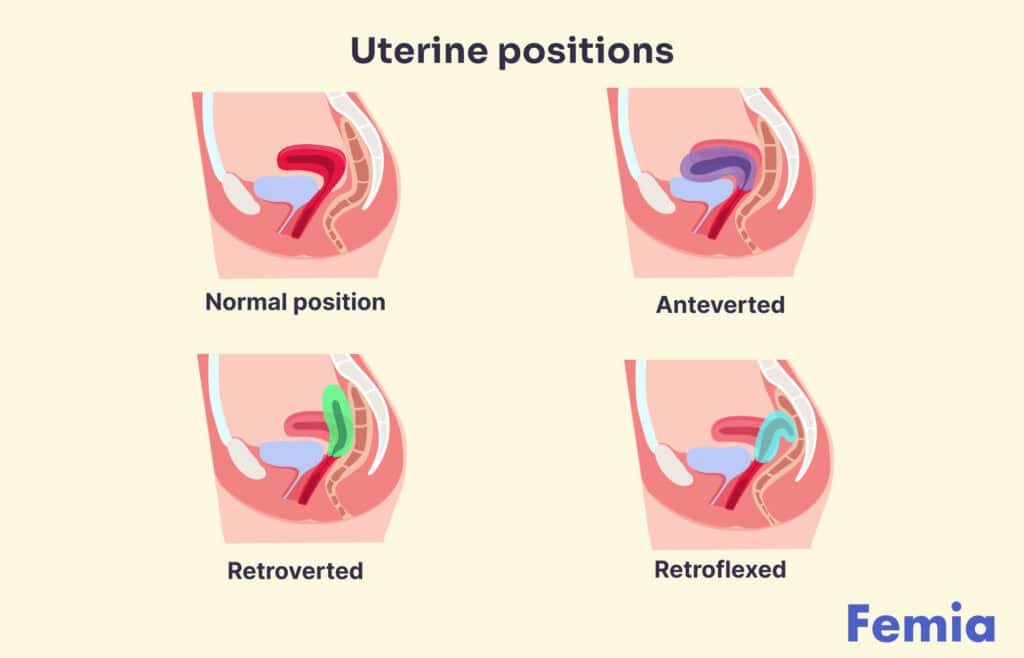
@femia.fertility Do you know the position of your uterus? Every body is unique, and understanding your unique situation can help you conceive faster. #uterusposition #anteverteduterus #uterus #uterineposition #femalebody #fertilityjourney #conceiving #ttc ♬ original sound - Femia fertility app
Does an anteverted uterus affect fertility?
According to the World Health Organization, around 17.5% of the adult population currently experiences struggles with fertility. Supposing half of these are women, the percentage related to the tilt of the uterus is likely very small. Among women facing infertility, the number experiencing issues specifically due to an anteverted uterus is probably minuscule and not a major contributor to overall infertility.
👉 Find out more: Enhancing fertility naturally: A guide to fertility supplements and foods for women
The position of the uterus does not usually affect fertility. Whether your uterus tilts forward or backward doesn’t make much difference in how sperm travels to fertilize an egg.
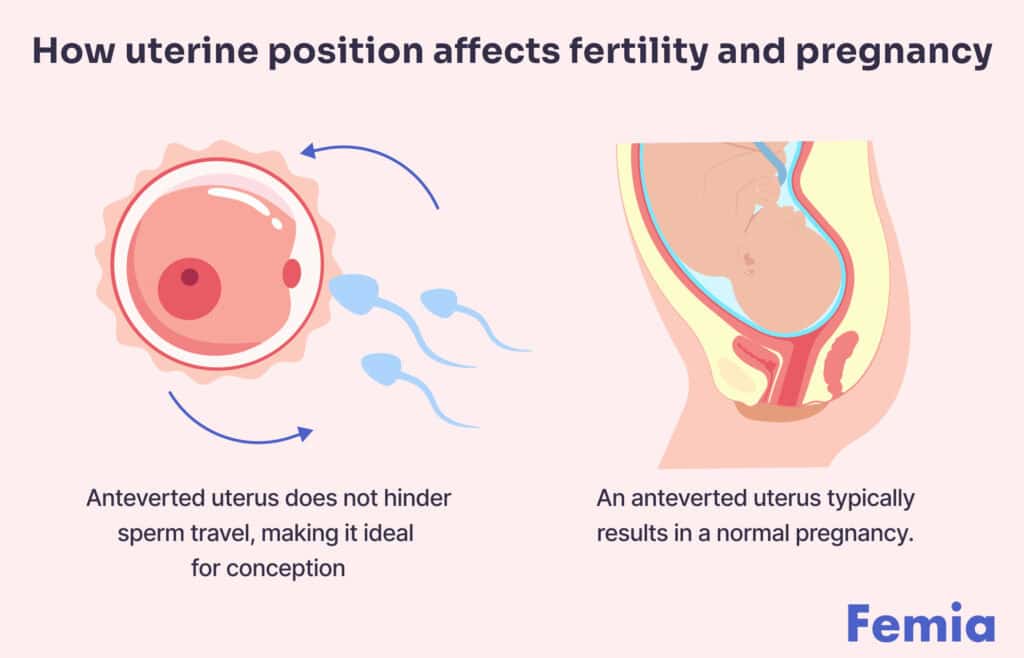
However, a retroverted uterus may be associated with pain during intercourse, which could indirectly impact fertility. In a study of 111 women, approximately 67% of those who recorded pain during intercourse had a retroverted uterus. This pain might lead to less frequent sex, which can reduce the chances of conception, but it is probably not changing the actual ability to get pregnant.
If you frequently note discomfort, such as recurrent back and pelvic pain, especially during sex, it’s a good idea to talk to your doctor. They can check for various potential causes and evaluate the position of your uterus along with other pelvic structures to find the source of the pain.
Is an anteverted uterus good for pregnancy?
An anteverted uterus pregnancy progresses normally in most cases. But it’s important to note that there is no optimal position for the uterus to be in to get pregnant. Most uterus positions are normal and do not impact the ability to conceive.

Changes in uterine position will occur consistently throughout your pregnancy. During the first trimester, as your uterus grows, it might move to a retroverted position and then shift again by the middle of your second trimester. However, this can vary from person to person, and not everyone will experience these changes.
👉 Find out more: Tips for getting pregnant at 30-35
Even with a normal, anteverted uterus, it is important to regularly check up with your obstetrician to ensure that your pregnancy is progressing well.
In very rare cases, a continuously retroverted uterus can cause complications such as incarceration of the uterus(6). Although it is extremely uncommon, it’s helpful to know the symptoms, which include severe pelvic pain, difficulty urinating, and constipation. If you experience any unusual or painful symptoms, it’s important to seek care from your doctor to ensure everything is on track with your pregnancy. Regular prenatal check-ups are key to monitoring your overall health and addressing any concerns early on.
While there is no way to predict whether the outcome of pregnancy, it is uncommon for an anteverted uterus, on its own, to cause complications. In most cases, having this uterine tilt allows pregnancies and deliveries to progress naturally without significant physical constraints.
Does an anteverted uterus affect sex?
An anteverted uterus typically doesn’t impact your sex life and usually doesn’t cause pain or discomfort during intercourse. However, if you do experience pain during sex, it’s important to consult your doctor, as this could indicate other underlying issues.
Questions from the Femia community
What is the difference between an anteverted uterus and an anteflexed uterus?
Anteversion is used to describe uterine tilt, which is measured between the long axis of the uterus and the vagina. Anteflexion, on the other hand, refers to the bending of the uterus at the angle of the cervix. A normal, and most common uterine position, is one that is anteflexed and anteverted, meaning it is lying in the forward position.
How is an anteverted uterus different from a retroverted uterus?
A retroverted uterus is found in a position opposite to that of an anteverted uterus. This means the uterus is observed to be tilting backward, resting on the wall closer to the rectum rather than that of the bladder, as noted with an anteverted uterus. More gynecological concerns are recorded with women having a retroverted uterus, such as pelvic pain, pain during intercourse, and constipation.
When should I see a doctor with an anteverted uterus?
Unless you have a serious health concern relating to your uterus, there is no requirement to visit a doctor if you have an anteverted uterus. An anteverted uterus is normal, and women do not record significant effects on their reproductive health. However, conditions affecting the uterus, such as uterine fibroids, adenomyosis, endometriosis, uterine prolapse, or pelvic inflammatory disease might warrant a doctor’s visit, if you notice related symptoms.
Will I need surgery for an anteverted uterus?
Surgery is not required if you have an anteverted uterus without any symptoms or problems. Since it is the most common, and normal, position a uterus is found to lie in naturally, surgical correction is rarely required unless there is a co-existing health condition.
The bottom line
An anteverted uterus is neither good nor bad, it is neither advantageous or disadvantageous when it comes to fertility. It is all a variation of normal. This tilt has positive outcomes for both fertility and pregnancy. Women are less likely to report reproductive health concerns with an anteverted uterus compared to those having uteri in other positions. There is no requirement for any medical treatment or surgery if you have an anteverted uterus unless you also have an existing reproductive health condition.
This can be easily diagnosed by your doctor if you relay your concerns during your routine health check-ups. If you still face a dilemma relating to the position of your uterus, do not hesitate to seek a professional opinion to help answer all questions you may have.
References
- Ameer, Muhammad Atif, et al. “Anatomy, Abdomen, and Pelvis: Uterus.” StatPearls – NCBI Bookshelf, 6 Dec. 2022, www.ncbi.nlm.nih.gov/books/NBK470297.
- Sanders, Roger C., and Anna K. Parsons. “Anteverted Retroflexed Uterus: A Common Consequence of Cesarean Delivery.” American Journal of Roentgenology, vol. 203, no. 1, July 2014, pp. W117–24. https://doi.org/10.2214/ajr.12.10403.
- World Health Organization: WHO. “1 in 6 people globally affected by infertility: WHO.” 4 Apr. 2023, www.who.int/news/item/04-04-2023-1-in-6-people-globally-affected-by-infertility.
- Sevindik, Betül, et al. “Differences in the Anatomical Structure of the Uterus Between Fertile and Infertile Individuals.” Clinical Anatomy, vol. 36, no. 5, Apr. 2023, pp. 764–69. https://doi.org/10.1002/ca.24045.
- Fauconnier, Arnaud, et al. “Mobile Uterine Retroversion Is Associated With Dyspareunia and Dysmenorrhea in an Unselected Population of Women.” European Journal of Obstetrics, Gynecology, and Reproductive Biology/European Journal of Obstetrics & Gynecology and Reproductive Biology, vol. 127, no. 2, Aug. 2006, pp. 252–56. https://doi.org/10.1016/j.ejogrb.2005.11.026.
- Ntafam, Carnot, et al. “Incarcerated Gravid Uterus: A Rare but Potentially Devastating Obstetric Complication.” Radiology Case Reports, vol. 17, no. 5, May 2022, pp. 1583–86. https://doi.org/10.1016/j.radcr.2022.02.034.
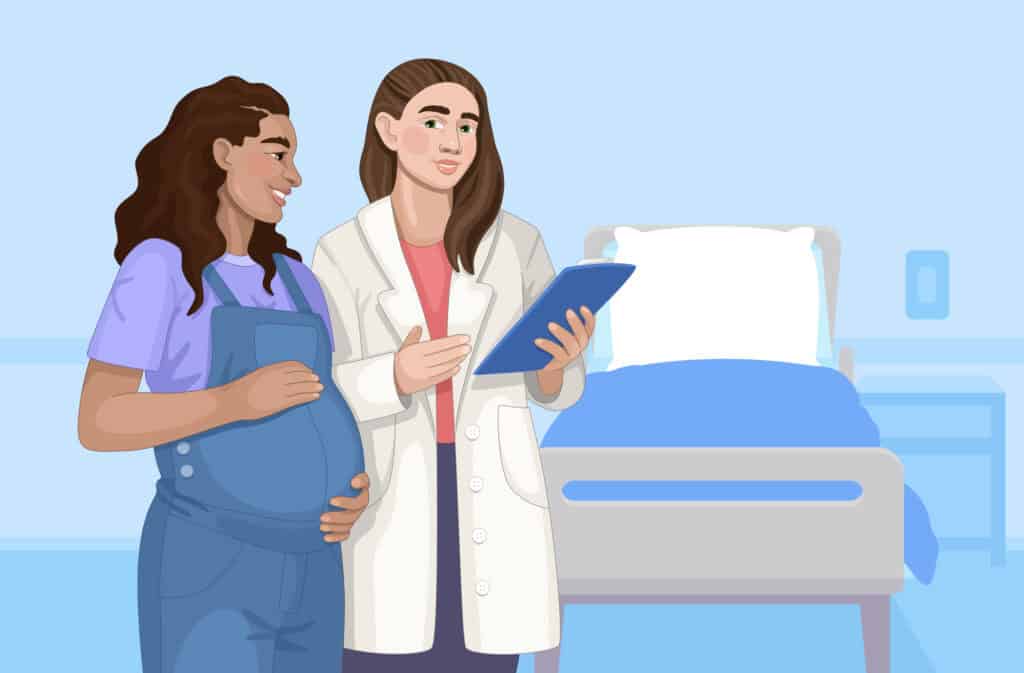
When do you go to the hospital for labor? Discover common signs of labor and learn how to distinguish early signs from active labor to find the answer.
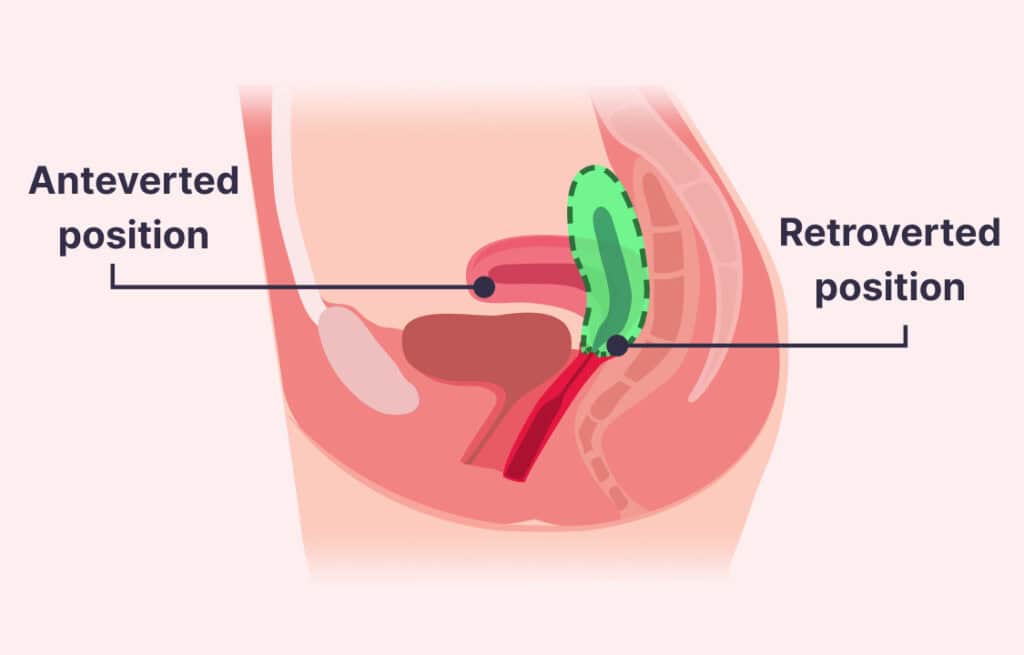
How to get pregnant fast with a retroverted uterus? Discover symptoms, impact on fertility, expert tips, and the best sex positions to improve your chances of conception.

Learn about common symptoms at 2 days past ovulation (2 DPO), hormonal changes, and what to expect. Understand when pregnancy tests can provide accurate results. Expert advice from Femia.

